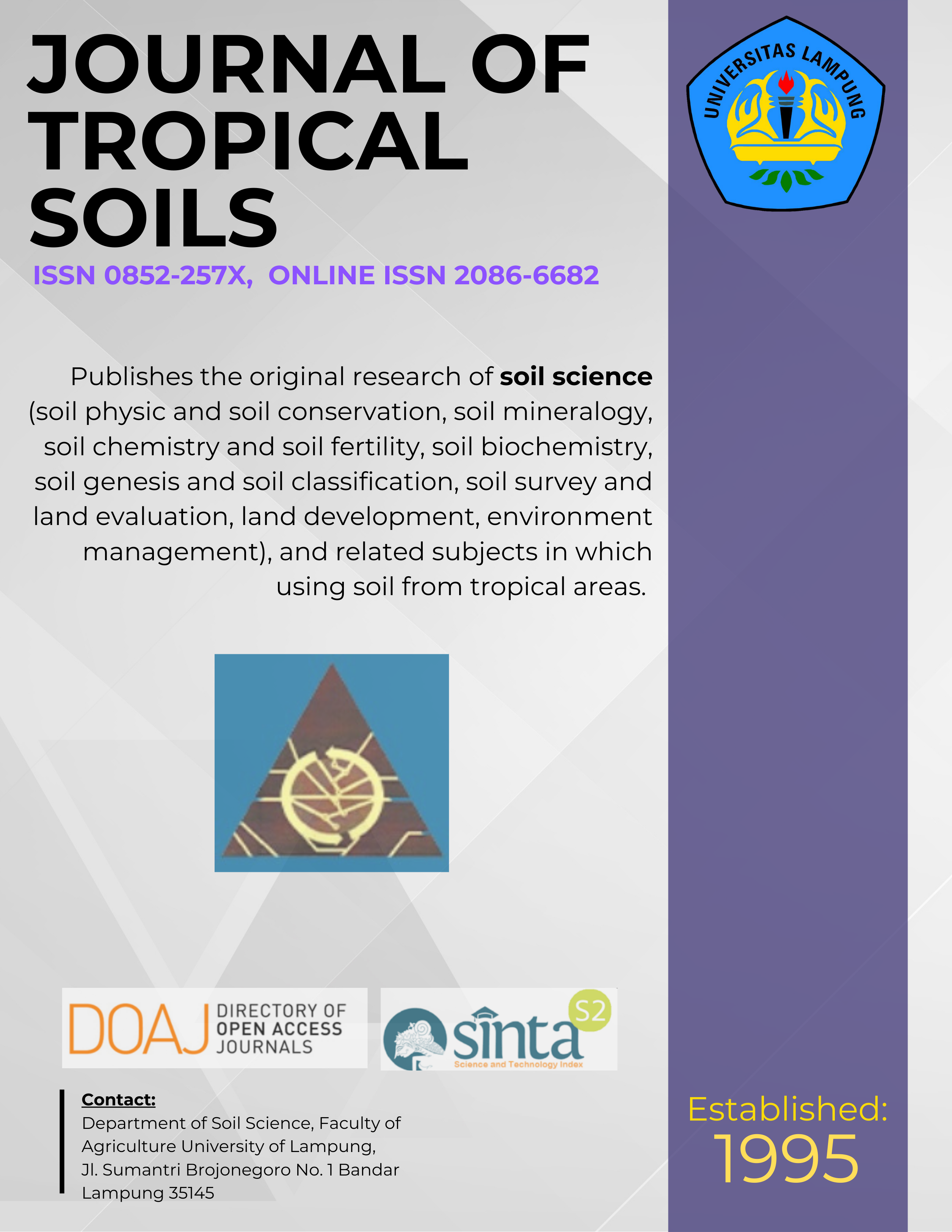The Changes of Earthworm Population and Chemical Properties of Tropical Soils under Different Land Use Systems
Main Article Content
Abstract
Hilly area Sumberjaya, West Lampung Province, South Sumatra, Indonesia, is one of the Province where deforestation increasing in the past 30 years as a result of the implementation of agricultural systems, especially coffee plantation. it is important to study the soil fauna in these natural relicts. Six sites (3 naturals and 3 managed systems) were studied in order to identify earthworm species communities, using the hand sorthing method and soil chemical parameters (pH, avail-P, org-C., tot-N, and cation exchange capacity (CEC). Two species were found (Pheretima sp. and Pontoscolex sp.). All land use systems had very similar soil chemical characteristics, there can be characterised as acidic (pH between 3.6 and 5.0). A high content of organic carbon was in natural sites (bush 4.0 % and primary forest 3.9 %), and a low content was in managed sites (coffee plantation 2.1 %). Total nitogen (0.37 %) and CEC (21.84 Cmol-c kg-1) was in primary forest. However, the earthworm densities were significantly lower under primary forest than in the other sites. The acidity component explained mainly  the lowest earthworm population at the primary forest (soil pH 3.6). The use of succession forest (bush) and mix farming showed a positive effect on soil fertilit.
Downloads
Download data is not yet available.
Article Details
Issue
Section
Articles
License for Authors
Authors who publish with this journal agree to the following terms:
- Authors retain copyright and grant the journal right of first publication with the work simultaneously licensed under a Creative Commons Attribution License that allows others to share the work with an acknowledgement of the work's authorship and initial publication in this journal.
- Authors are able to enter into separate, additional contractual arrangements for the non-exclusive distribution of the journal's published version of the work (e.g., post it to an institutional repository or publish it in a book), with an acknowledgement of its initial publication in this journal.
- Authors are permitted and encouraged to post their work online (e.g., in institutional repositories or on their website) prior to and during the submission process, as it can lead to productive exchanges, as well as earlier and greater citation of published work (See The Effect of Open Access).
License for Regular Users
Other regular users who want to cite, distribute, remix, tweak, and build upon author’s works, even for commercial purposes, should acknowledge the work’s authorship and initial publication in this journal, licensed under a Creative Commons Attribution License.
How to Cite
The Changes of Earthworm Population and Chemical Properties of Tropical Soils under Different Land Use Systems. (2008). JOURNAL OF TROPICAL SOILS, 13(2), 131-137. https://doi.org/10.5400/jts.2008.v13i2.131-137

